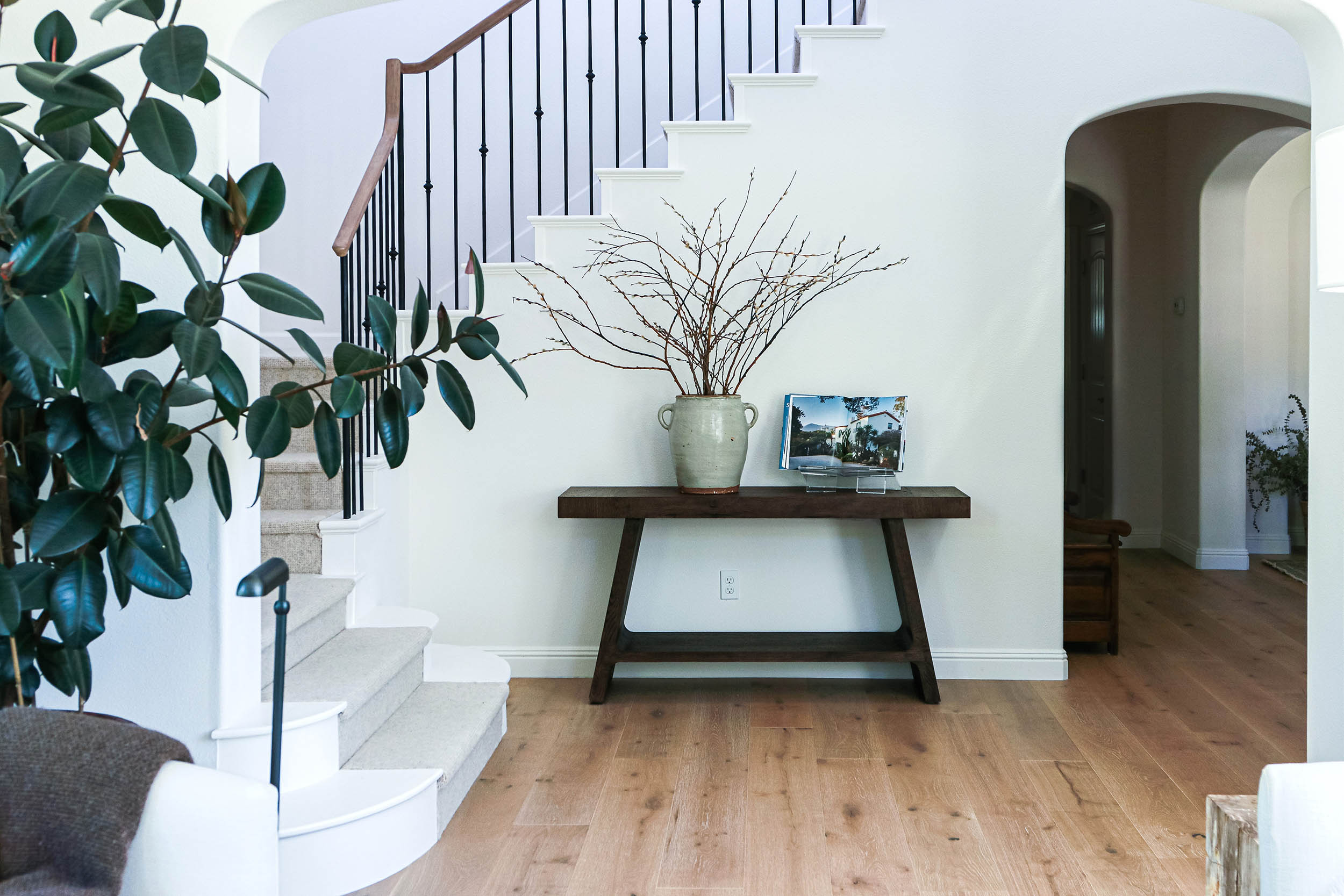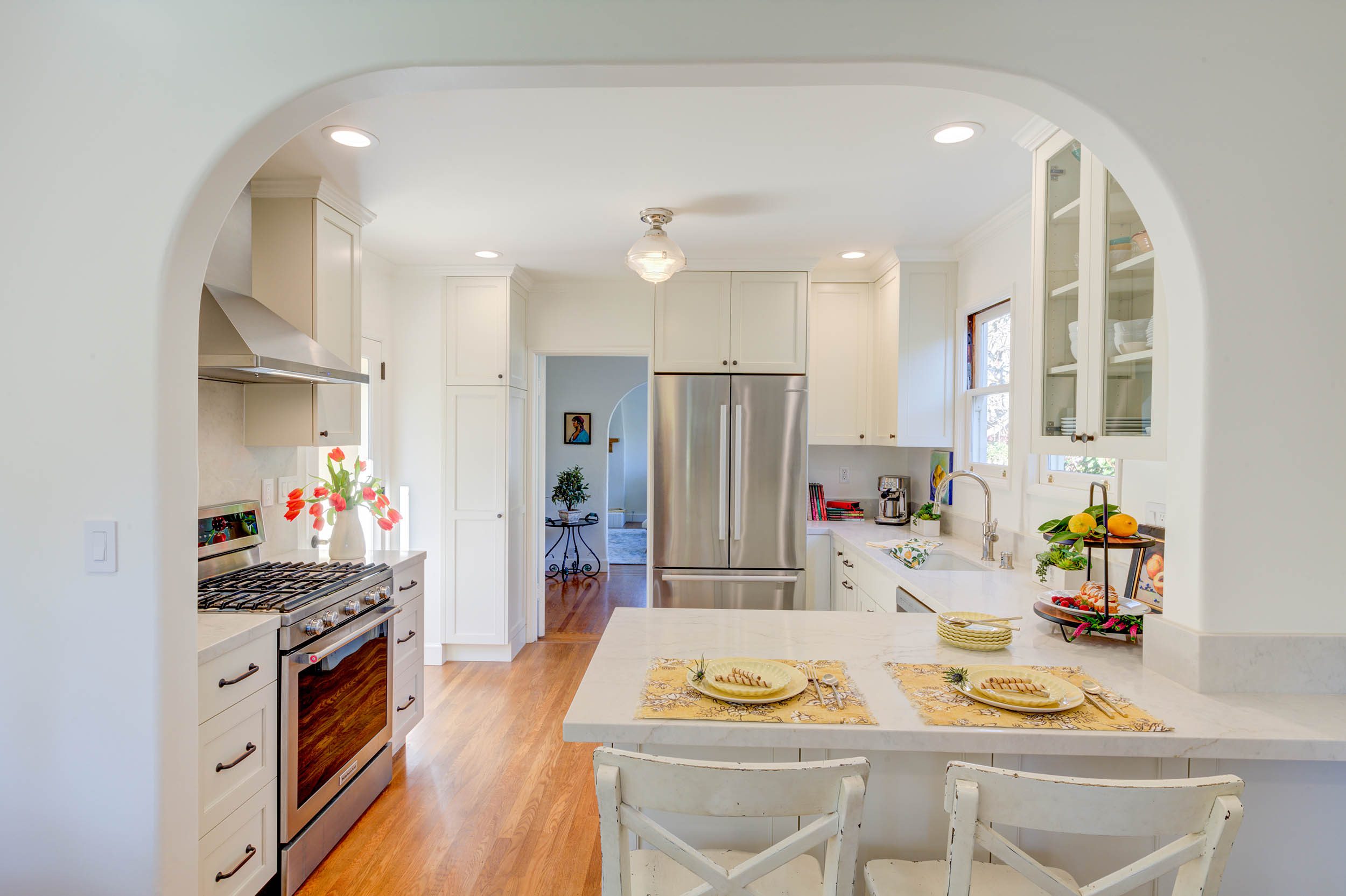Like lifelong friendships, hardwood grows richer with time. First created in the 15th century, it has been the standard bearer in luxury flooring for the bay area and Marin, since the early 1900s. That is still true today.
IMPROVEMENTS IN HARDWOOD DESIGN
In many ways, hardwood flooring hasn’t changed since those early days. Its rich texture, its singularly natural grain are as comforting and lush as they were 100 years ago.
But there have been a few improvements. The tongue and groove design is one of those. Before tongue and groove, wood planks were nailed down individually, and laid side by side on the floor. Over time, the boards expanded and contracted, due to changes in humidity and temperature. Eventually, they would shrink or develop a u-shape, where edges become higher than the center (called “cupping”). That in turn created gaps and unevenness in the floors, just right for catching your toe as you stroll down the hallway in the middle of the night.
When installed correctly, the tongue and groove design fits the boards together neatly, like tight-fitting puzzle pieces, and prevents those bumps and gulleys from forming.

Wide plank design in Gilroy, CA
TRENDS IN HARDWOOD STYLE
The hardwood floors of today tend toward wider planks. What makes them possible is engineering. Created in the 1960s, engineered hardwood accounts for more than 30% of all hardwood floors today.
Contrary to what many believe, engineered woods are just as natural as solid hardwood.
- Both have a wear layer, which is what you see underfoot
- Both can be refinished multiple times (depending on the thickness of that wear layer)
- Both can be completely customized to suit your tastes
- Both are 100% real wood
The difference between the two is in their internal construction. Engineered hardwood is (well) engineered with a crosshatch design. Like a game of Jenga, the engineered planks have natural wood layers inside of them that are crisscrossed perpendicularly to each other. That construct enables the planks to hold their shape better – especially at broader widths.

Narrow plank design in San Rafael, CA
During the last 35+ years working with hardwoods, I have found that solid wood planks begin to lose their stability when they are more than 4-5 inches wide. That holds true for all woods, whether it is a fine European Oak from New Zealand, or a locally-sourced walnut. Engineered wood, on the other hand, because of its stable construction, remains sturdy and strong at six, eight and even 10 inches.
That is not to say that engineered hardwood is superior to solid hardwood. Solid hardwood, for example, is often the choice in more intricate designs, such as parquet or honeycomb floors, or simply because that is what you are drawn to.
ONE RULE IN HARDWOOD
In the end, the kind of wood floor you select for your home should have more to do with your lifestyle and your personal tastes than what sort of internal construction the planks have. I encourage you to be open to both solid and engineered options.
The only real rule about hardwood floors is this. Choose one that you like, and find an expert you trust to design a solution to meet your needs.
By: Rudy Hassid
Rudy Hassid is the owner and president of Floortex Design
Floortex Design is a family of boutique-style flooring and interiors showrooms, where designers and homeowners alike can find the finest hardwood, wool and synthetic rugs, unique collections, window coverings and expert craftsmanship.




